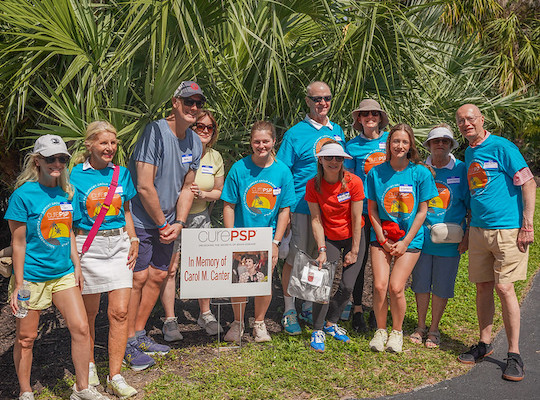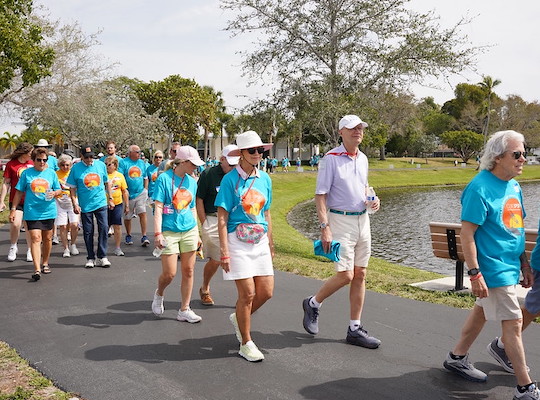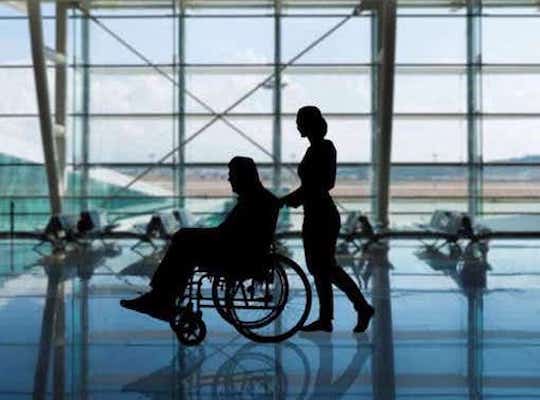Advancing Communication: The Latest in Assistive Speech Technology
Oct 22, 2024 Courtney Malburg and Oscar Sullivan
Representative Jennifer Wexton delivering what is believed to be the first speech on the House floor ever given via a voice cloned by artificial intelligence (AI) was a landmark moment not just for herself, but for the entire CurePSP community. It signaled a new frontier of possibilities, a world where those affected by progressive supranuclear palsy (PSP), corticobasal degeneration (CBD) or multiple system atrophy (MSA) could retain a sense of themselves as speech symptoms advance.
We at CurePSP realize the profound effect that this technology could have on those living with these diseases, and will be monitoring the latest updates to inform our community of their options.
Advances now offer ways to compensate for losses in speech. Augmentative and alternative communication (AAC) is any method of communicating aside from talking. AAC devices and technology can help people adapt and continue communicating with those around them. Voice programs are a form of AAC technology and important resources that will become more common with the rise of AI. In response to the need for adaptations to these communication difficulties, recent advancements in technology have led to the creation of voice programs. Voice programs use your voice to create a bank of words for text-to-speech applications through build, voice repair and voice design. This can be a welcome alternative to the robotic-sounding text-to-speech devices that are commonly used. Before exploring assistive speech devices, talk with a speech-language pathologist (SLP) about the kind of communication difficulties and if voice programs would be beneficial for you.
How Voice Banking Works
1) Decide what your voice banking needs are.
Voice banking refers to the process of using a program to record a “bank” of words. With the bank of words, the person experiencing the symptoms and the programmers will decide what level of technology is required to bring the voice to text-to-speech. The options are:
- Voice build: To be used when someone’s voice still sounds reasonably good; it might have been a little affected but there is good volume and clarity. This method will use the recordings as they are to build the text-to-speech platform.
- Voice repair: For people are starting to notice changes in their voice (clarity, slurring, breathy) but can still record. The program will enhance the voice and make it clearer for text-to-speech purposes.
If someone’s voice is past the point of being able to record, they can consider:
- Voice design: When someone’s voice is essentially gone; the program will use videos or clips of old voice. This option is oftencan be comparatively expensive and requires the person to have an extensive library of audio clips available.
*Rep. Wexton used voice design to preserve her voice, drawing from the hundreds of clips she has from speaking as a lawyer and politician.
2) Select a voice banking software program.
Voice programs often offer free consultations to help decide what individual needs are. You can meet with multiple programs to decide which you feel most comfortable with and will meet your needs the best. You can ask them if they are able to create unique words and phrases for you, like commands for pets or even nicknames for loved ones.
Most voice banking programs require membership. There is a wide spectrum of associated costs across and within software programs. Within some memberships, people can choose packages that contain different amounts of words that will be created, the level of audio quality received and levels of direct customer service.
Check out a few voice banking software programs on CurePSP’s Assistive Devices webpage. Eleven Labs, MOV Acapela, Speak Unique, VocalID: CereVoice Me from Cereproc and Voice Keeper Talk to Me Technologies are some examples of voice banking programs. This is not an exhaustive list of available options but is a good starting place to understand what options are available.
3) Follow the instructions of the program to record and submit.
If you are recording phrases for the software to use to replicate your voice, the program will provide a script for you to read and submit. This script will make sure the software has all the necessary sounds and words to create a bank of words to choose from. It’s most ideal to have an external microphone to speak into when recording audio clips. Some companies will send a microphone to you to use. If that is not part of the program, there are many microphones available for purchase online. When recording, make sure that you are in a quiet room.
If you are using voice design to create the voice bank, you will submit audio clips to the program as instructed. However, be aware that using old clips may limit the amount and type of words that can be created because they might not cover all the sounds and words that the software needs to fully replicate your voice.
4) Choosing a voice alternative.
The program will create a bank of words to be used on a text-to-speech app. You should test out the options, being sure to ask friends and family which voice they think sounds most like yours. We often have a skewed version of how we think our voice sounds and it’s helpful to get multiple perspectives.
5) Using the voice bank.
Using the voice bank slightly varies by program. Generally, the company will send you files that you will then upload to a text-to-speech app on your computer, tablet or smartphone. There are many speech-to-text apps available on app stores, with many of them being free. Once your voice bank is uploaded onto an app, you use it just like using other text-to-speech platforms. You will click on the words and phrases you’d like to communicate, and they are read aloud in your voice!
It is important to choose the technology that best suits one’s needs and stay patient as symptoms change. Stay tuned as we update CurePSP’s Assistive Devices page with the latest options available to preserve speech.
Join our email list
Get the latest news and resources
directly to your inbox.
Get the latest news and resources directly to your inbox.
Sign Up

.jpg)

